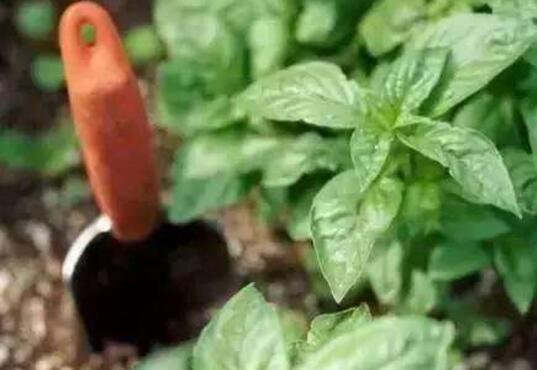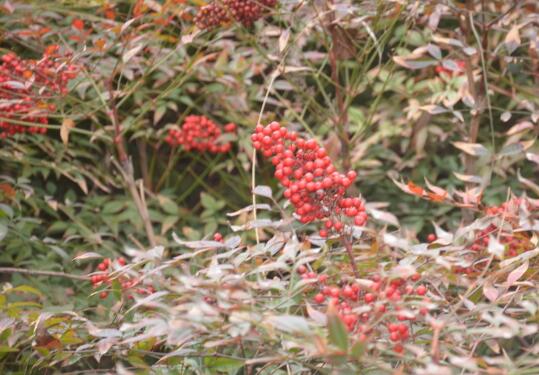How to breed basil, basil when to sow/March-May sowing/can be cut
Basil's breeding method is simple and adaptable, which can be planted on a large scale or potted for ornamental use. What is the general way for this kind of plant to reproduce? I'm afraid this is a question that many flower lovers need to know, so how does basil breed? Let's take a look at basil's method of reproduction.
How does basil reproduce?

The common propagation methods of flower friends are sowing and cutting. for potted flower friends, cutting is one of the better choices, it has relatively low requirements for facilities and technology, and it is relatively easy to maintain and manage. Sowing and reproduction need to find high-quality seeds, but can reproduce a large number of basil at a time.
The breeding method of basil
1. Basil cutting propagation
1. Can basil be cut
Although the branches of basil are not long and the petioles are relatively short, it can also be cut, and the cuttings have less impact on the mother plant and are easier to maintain, but we must pay attention to the skills when selecting cuttings.
2. Select branches
Be sure to select branches from basil plants that have never flowered, so the cutting time is usually before flowering, that is, before July, preferably in spring. Select 5-10 cm branches from the plant and cut them off over fire.
3. Pruning branches
Cut off the leaves below the branches, keep only the upper 2 leaves, and then put them in a cool place to wait for the cut to dry naturally, do not put the branches in the sun, otherwise it is easy to cause the leaves to wilt and may affect the survival rate of cuttings.
4. Soil planting and later stage management
Insert the cuttings into the prepared basin soil, and then immediately water, watering needs to be watered thoroughly, and then put in a bright place, there is no need for watering and fertilization, if the soil is relatively dry, you can spray water properly, usually it will take root after 3-4 weeks.
2. Water insertion propagation
In addition to the soil cuttings above, basil can also be propagated with water, making cuttings the same as soil cuttings, but then inserting cuttings into water, and maintenance management will be slightly different. When inserting water, it takes 3-4 days to change the water, and then change the water every day after rooting. After rooting, it can be transplanted to the potted soil.
3. Basil sowing and propagation
1. When will basil sow
Because the suitable temperature is needed to ensure rooting after sowing, the time is generally in March-May, in which the temperature in the south rises rapidly, usually in March-April, while in the north it needs to wait until April-May to start sowing.
2. Operation method
How does basil reproduce when sowing seeds? First of all, good seeds should be selected and germinated. Wrap the seeds in a wet towel and control the temperature at 25 degrees. When the seeds sprout successfully, the temperature can be kept at about 22 degrees.
The budding seeds are planted into the prepared nutritious soil and watered thoroughly with warm water, then covered with plastic film for heat preservation and moisturizing, control the light and temperature, and then transplant after seedling cultivation.
Sowing and cutting of "graphic" basil
The essentials of sowing and reproduction of basil
Wrap the harvested seeds in a clean wet towel and keep them at 25 ℃ for germination. When the small buds of the seeds grow, it is necessary to lower the temperature by 3 ℃ to 5 ℃, and then sow the seeds after a period of maintenance.
The time of sowing is from March to April in the south and from late April to May in the north. Fill the flowerpot with nutritious soil, pour water thoroughly, and put in the seeds. After that, it can be watered regularly and maintained for a period of time.
Pictorial basil sowing
Choose the flowerpot and put the right amount of nutritious soil in the flowerpot
After watering, put a certain number of seeds into the flowerpot, usually more than 10 seeds will be fine
Good maintenance, watering, as well as temperature control and light control
The Essentials of cutting Propagation of basil
Basil can be cut, and the main work of cutting is to choose cutting, cutting and maintenance.
In the choice of cuttings, basil's cuttings are not suitable for flowering plants, so cuttings need to be carried out before flowering. Cut off branches that are 5 to 10cm long and trim them, leaving only two leaves. Insert the cuttings into the prepared medium, pour water thoroughly, and wait for it to take root. It can also be plugged directly, easy to operate, clean and beautiful.
Pictorial basil water plug
Select the appropriate branch on the basil plant and cut it off with a knife
Remove the leaves from the lower part of the branch and keep only the upper leaves
Insert basil into the glass, take care of it and pay attention to the change of water
After a period of growth, the roots can grow.
The planting method of plant basil
Basil
Scientific name: Ocimum basilicum
Aliases: dwarf bran, nine-story pagoda, gold, St. Joseph grass, sweet basil, orchid incense
Family and genus: basil of Labiatae.
Cultivation management: sowing or cutting propagation. Seeds are sown indoors or in hotbeds in early spring in North China and can be planted at the beginning of April. Softwood cuttings can also be topped in summer. It sprouted about 3-7 days after sowing, and was transplanted about one month until there were two pairs of true leaves (plant height about 15cm). The distance between planting rows is generally (15: 30) cm × (50: 90) cm. After growing, the plant is branched and clumpy, and if it is mainly used to produce fresh food of leaves, coring should be carried out to promote branching and increase harvest. The general N-P205-K20 ratio of fertilizer application is 1:1:1. It is suggested that nitrogen (N) per hectare is about 230~300kg as base fertilizer, and then 50~75kg nitrogen is used as topdressing fertilizer after harvest.
Application: mostly used as courtyard flower path background or ground cover plant, the whole plant contains aromatic volatile oil, is the main aromatic, medicinal plant.
- Prev

How to reproduce rubber trees, how to cut rubber tree leaves / soil / water cutting can be
Rubber tree is a kind of evergreen tree, its reproduction mode is special compared with other plants, for example, in common cutting propagation, both cuttings and single buds can be used, and there are many choices for water and soil cutting.
- Next

How to propagate Phyllostachys pubescens and its propagation methods / sowing / ramet / cuttings
Phyllostachys pubescens is a common flower plant in people's life. There are many people who breed it in our country. With more people raising it, people are more concerned about how to reproduce, so how to breed it? What are the specific breeding methods of Phyllostachys pubescens? Next, the editor will take you to learn about it.
Related
- Fuxing push coffee new agricultural production and marketing class: lack of small-scale processing plants
- Jujube rice field leisure farm deep ploughing Yilan for five years to create a space for organic food and play
- Nongyu Farm-A trial of organic papaya for brave women with advanced technology
- Four points for attention in the prevention and control of diseases and insect pests of edible fungi
- How to add nutrient solution to Edible Fungi
- Is there any good way to control edible fungus mites?
- Open Inoculation Technology of Edible Fungi
- Is there any clever way to use fertilizer for edible fungus in winter?
- What agents are used to kill the pathogens of edible fungi in the mushroom shed?
- Rapid drying of Edible Fungi

